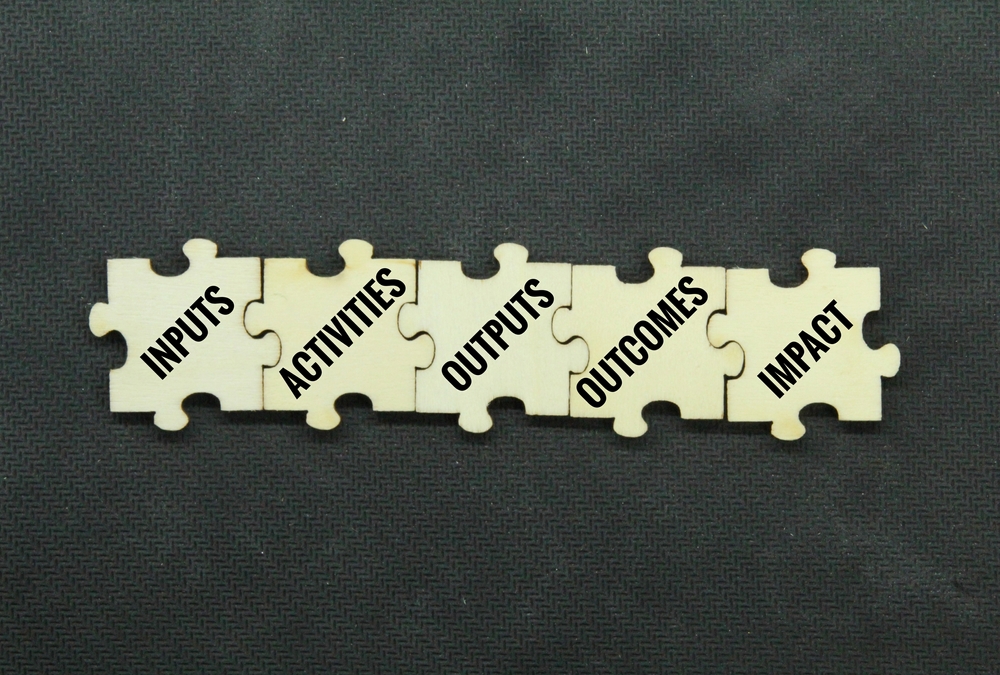Table of Contents (click to expand)
Theory of change is the buzzword in not-for-profit circles. Before creating an impact, ToC helps an organization map its journey contextually in a Logframe.
For any company that is primarily concerned with increasing profits and sales, making a societal impact can be challenging. That is not to say that companies focused on increasing profits and sales do not have any effect. In fact, they have effects in two ways: by acting as donors for not-for-profits, and through their products. However, these products may be affordable only by certain income classes in society.
On the other hand, a non-governmental organization (NGO) works on mainly improving access to public goods. Public goods refer to goods such as education, healthcare, or any other good that is deemed a minimal requirement for each citizen in the society. Public goods must be provided by the government because access to these goods ensures a better standard of living. If its provision is left to the market, these goods would never be optimally distributed. Thus, it is the right of each citizen to have access to these goods, but market forces may price them at high levels, thereby hampering access.
NGOs play a crucial role in bridging these gaps in various ways. They play a critical role in helping countries ensure that development reaches grassroots levels. There are regional, national and international NGOs. There is no standard definition for an NGO. They run on donations made by governments, corporations, philanthropists and individual donors alike.
A not-for-profit places its primary emphasis on addressing societal needs, rather than profit maximization. Moreover, unlike governments, they are also able to focus on smaller pockets and ensure quality access to the public good on which they are focused.

How Does A Not-for-profit Organization Map Its Intervention?
Every not-for-profit works towards eradicating a societal evil. Be it eliminating or alleviating poverty, improving access to education, improving menstrual hygiene, and so many more. This is known as the outcome that the organization is expecting to achieve through its intervention.
For a long time, many not-for-profit companies got away with shoddy interventions. Whenever there was a failure in their promised delivery to bring change, it was most often attributed to changing contexts that they had failed to anticipate. This shortsightedness disappointed donors and organizations alike. Their failure to chalk out their journey from identifying a problem to solving it (to some extent) was deeply affected by the lack of a flexible yet long-term framework.
To achieve any social goal, a not-for-profit needs to put in collective efforts to bring this desired change to the targeted population. Collective efforts mean coordination from multiple stakeholders, from donors to the targeted population. How they collate interests and work to bring about a change is known as the ‘Theory of change’ (ToC).

To achieve any developmental change or outcome, the biggest thing an organization must understand is the context in which it operates. For instance, if the output is to improve girls’ education, this would have different outcomes in a country like India vs. Bangladesh, as the societies operate differently.
Each society has its notions of what a girl must and mustn’t do. Suppose that education for young females has to be improved. In that case, the not-for-profit needs to account for all the societal assumptions and risks while designing an intervention to ensure that no factor is taken for granted. This is precisely why every not-for-profit has a different theory of change. Each theory, although seeking to achieve common goals, might tackle different assumptions and risks based on their location.
The theory of change (ToC) is usually mapped in a logical framework (logframe) that helps break down the expected transition into methodological steps with suitable indicators to visualize and quantify the desired change.

Also Read: Why Is It Difficult To Redesign Education In Developing Nations?
Where Did The ToC Originate?
No precise date exists for its existence, but a group of academicians working on applied development in the evaluation field, namely Huey Chen, Peter Rossi, Michael Quinn Patton, and Carol Weiss, are credited for the theory. This was a culmination of decades of research and application in evaluation studies.
ToC was widely adopted, as it fits in the logframe method; it helps to monitor and evaluate developmental projects. The Logframe is just a formal representation of the causal pathway. It is formally known as the Logical Framework Approach and was developed for monitoring programs by USAID. It is used also widely used for profit organizations today.
Also Read: Why Do Only The Developed Parts Of Developing Nations Keep Getting Investments?
How Does The ToC Work?
ToC helps a not-for-profit organization map its causal interventions backwards. Once an organization identifies its outcome, it looks back at the conditions required to achieve those goals. This causal pathway helps connect and explain the necessary conditions to bring about this change by defining the inputs the organization would invest in to bring about this change.
For example, if an NGO aims to work on empowering women, that should be the outcome of their activities. To attain this outcome, there will be several activities they will have to conduct, such as training, improving livelihoods, improving access to education, awareness and advocacy among multiple stakeholders in the system. An NGO cannot also do all these activities, so it needs to identify its strengths, which is where they will direct their resources. This exercise helps them narrow down their activities.
Along with defining these activities, an NGO also needs to define the indicators of these activities, along with their frequency. It is imperative to list these out so that an NGO can channelize their efforts to the inputs they believe will help them achieve their outputs.
The process of ideating a ToC must be highly participatory and deliberative, and heavy brainstorming is usually required. Airing assumptions is crucial, as it can appear at every stage. Outcomes are added, deleted and modified until the logic of the logframe is collectively agreed upon.

The underlying activities of the ToC can also change as the context changes or uncovers itself. This change warrants a not-for-profit to reformulate its strategy to tackle the development change.
The level of detail in the ToC helps funders assess the practicality and feasibility of the proposed change. It helps them hold the not-for-profit accountable for vaguely defined goals, inputs, activities or outcomes. Each activity must have indicators that signal when a step has been accomplished. This helps an organization present a systematic front to donors and have confidence in their execution of developmental programs, which are never mechanical in execution!
How well do you understand the article above!

References (click to expand)
- Blamey, A., & Mackenzie, M. (2007). Theories of change and realistic evaluation: peas in a pod or apples and oranges?. Evaluation, 13(4), 439-455.
- Theory of Change Supplement: A short literature review and .... stapgef.org
- THEORY OF CHANGE. The United Nations Sustainable Development Group
- Backwards Mapping and Connecting Outcomes. theoryofchange.org
